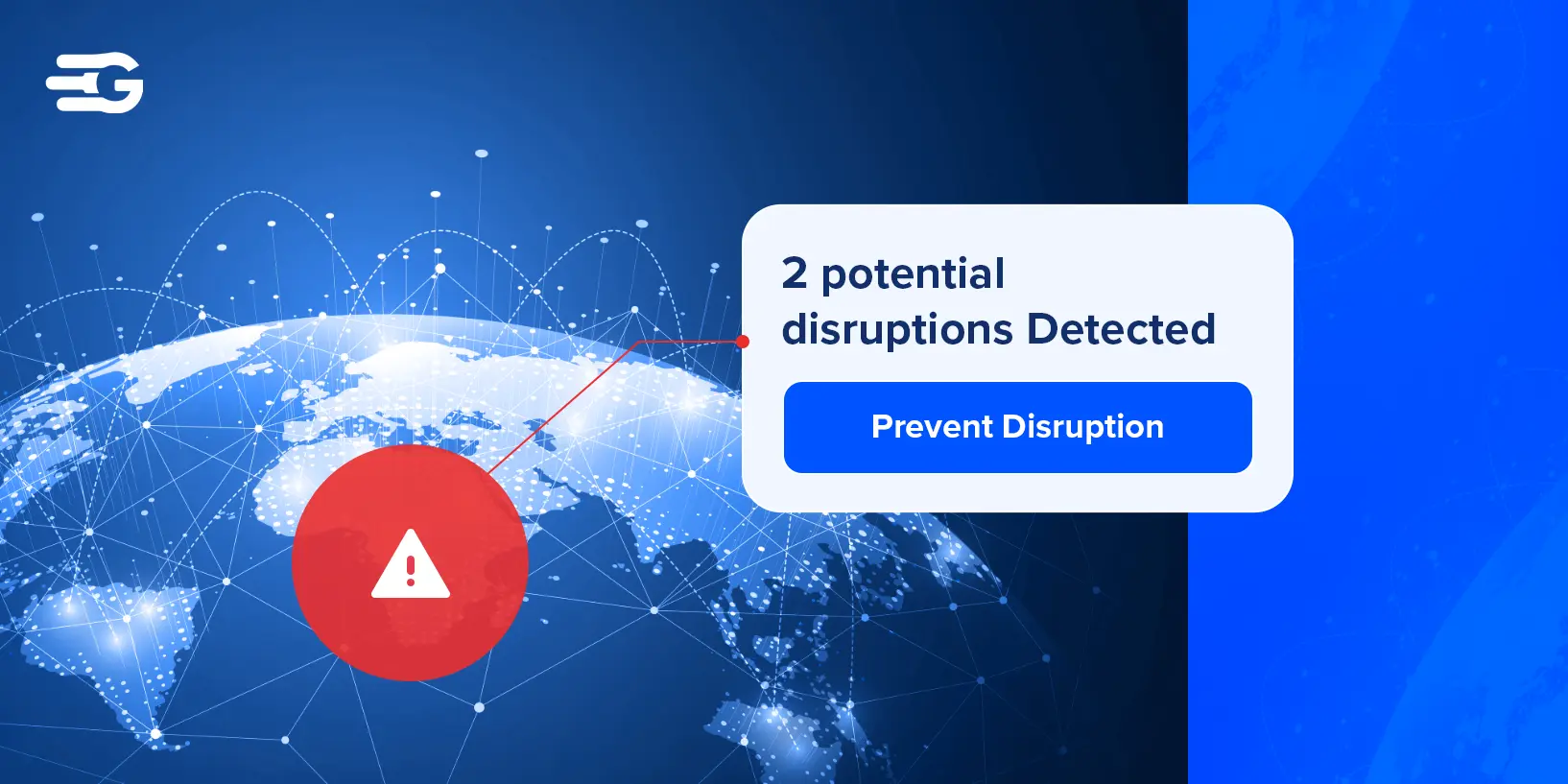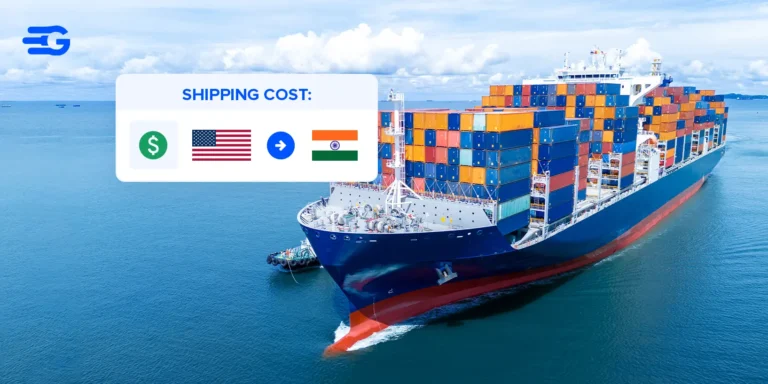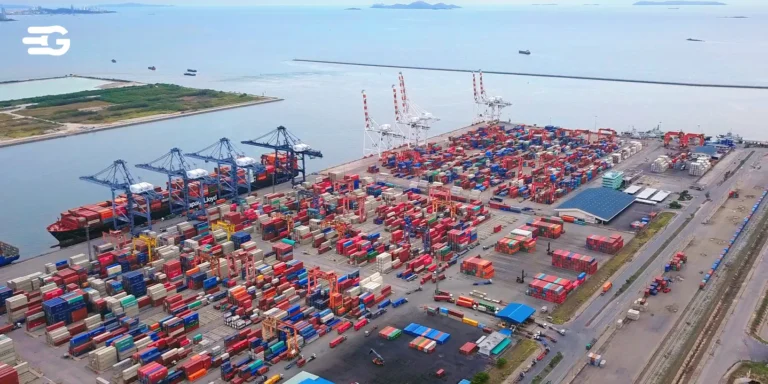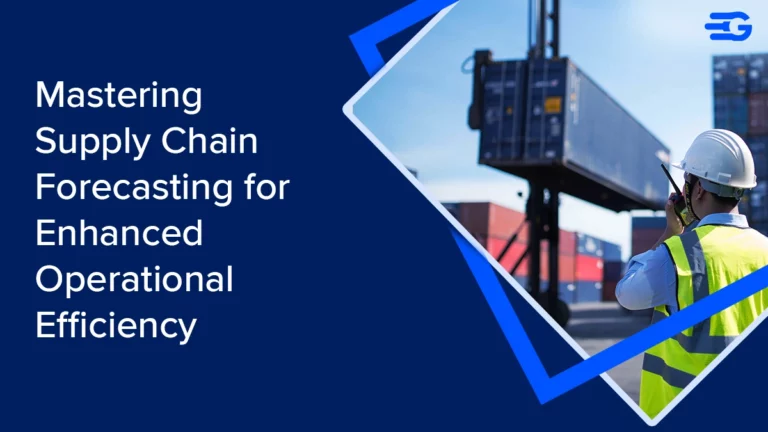Supply Chain Disruptions: An Expert Guide
Supply chain disruptions are becoming more frequent and severe. From global pandemics to cyberattacks, businesses are facing challenges that threaten their operational continuity. Understanding these disruptions and their causes is crucial to building resilient supply chains.
Supply chain disruptions can cripple business operations, affect revenue, and damage customer relationships. To mitigate these risks, companies need to understand past incidents and develop strategies to safeguard their supply chains. Being prepared is not just a strategic advantage. It’s a necessity in today’s volatile global environment.
Understanding Supply Chain Disruptions
“Supply chain disruptions occur when unexpected events happen, and addressing them requires a multi-layered approach. The first layer is visibility-data must be well-organized at a fundamental level.” – Gautam Prem Jain, CPO of GoComet
Supply chain disruptions occur when unforeseen events hinder the flow of goods or services. These disruptions can impact production, logistics, and distribution, leading to delays, increased costs, and lost revenue. They can also damage a company’s reputation and erode customer trust.
Common Causes:
- Natural disasters: Earthquakes, hurricanes, and floods can damage infrastructure and halt production. Businesses must plan for these contingencies to maintain stability.
- Pandemics: As seen with COVID-19, global health crises can cause widespread factory closures and workforce shortages. Contingency planning can mitigate impacts.
- Geopolitical tensions: Trade wars and embargoes can disrupt the supply of essential goods, forcing businesses to adapt quickly to policy changes.
- Cyberattacks: Ransomware can compromise logistics systems, leading to costly delays and data breaches. Companies must prioritize cybersecurity.
- Labor strikes: Work stoppages can interrupt production and transportation, highlighting the importance of maintaining positive labor relations.
- Transportation failures: Accidents or infrastructure damage can delay deliveries, underscoring the need for robust logistics planning.
- Supplier insolvency: Financial instability can lead to sudden supply shortages, making supplier vetting crucial.
Notable Examples of Supply Chain Disruptions
COVID-19 Pandemic
Impact: Global lockdowns caused factory closures, labor shortages, and transportation halts, leading to product shortages worldwide. Businesses had to quickly pivot to meet changing demand patterns. Lesson: Diversifying supply chains and leveraging technology are crucial for building flexibility.
Suez Canal Blockage (Ever Given Incident)
Impact: The blockage of a critical trade route delayed global shipments for days, highlighting vulnerabilities in major transit points. Lesson: Single points of failure can have massive global impacts. Developing alternative routes is essential.
2024 Red Sea Crisis
Impact: Houthi attacks on vessels forced ships to reroute, increasing transit times and costs, emphasizing the importance of geopolitical risk management. Lesson: Geopolitical risk assessment is vital for route planning and operational continuity.
JBS S.A. Ransomware Attack
Impact: A cyberattack on a major meat supplier disrupted food supply chains globally, causing product shortages and price hikes. Lesson: Strengthening cybersecurity and building contingency plans are crucial in modern supply chains.
2025 Co-op Supermarket Cyberattack
Impact: A ransomware attack disrupted logistics and led to empty shelves across the UK, affecting customer satisfaction. Lesson: Robust IT infrastructure and data protection strategies are essential for supply chain continuity.
U.S.-China Trade War
Impact: Tariffs on goods forced companies to rethink their sourcing strategies, driving the need for diversified supplier networks. Lesson: Monitoring trade policies and adapting procurement strategies are key to mitigating risk.
Preventing $2.5 Million Weekly Losses with GoComet
One of the most impactful recent disruptions occurred in the Red Sea, a vital maritime corridor that handles 12% of global trade and 30% of container traffic. The region became a hotspot for geopolitical tensions when Houthi rebels attacked commercial vessels in the Bab el-Mandeb Strait. This crisis forced companies to reroute vessels around the Cape of Good Hope, drastically increasing transit times-sometimes by up to 10 days. The disruption affected not only Asian shipments to Western Europe and the US but also had a ripple effect on global supply chains.
A prominent example of the crisis’s impact involved a global textile leader facing production halts. The company’s raw materials, typically managed with a 10-day safety stock, were delayed significantly due to rerouting, causing potential losses of $2.5 million per week.
GoComet’s solution was to leverage GoTrack’s Predictive ETA, which utilized AIS ship location data to forecast delays accurately. This predictive capability allowed the textile company to adjust production schedules proactively, preventing complete shutdowns. Moreover, GoComet provided impacted customers, including major brands like Unilever, Honda, and General Mills, with transparent updates. Accurate ETAs empowered local distribution teams to manage expectations and maintain customer satisfaction during the crisis.
By harnessing real-time data and predictive analytics, the textile manufacturer mitigated potential losses, saving approximately $2.5 million per week and ensuring operational continuity. The key lesson here is the critical role of advanced technology and visibility in navigating geopolitical supply chain challenges.
Strategies for Mitigating Supply Chain Disruptions
- Diversification: Avoid over-reliance on single suppliers or regions to reduce risk.
- Technology Integration: Implement real-time tracking, predictive analytics, and AI-powered decision-making to enhance supply chain resilience.
- Risk Assessment: Regularly evaluate potential risks and build robust contingency plans to address them effectively.
- Collaboration: Strengthen relationships with suppliers and logistics partners to ensure smooth communication and faster problem-solving.
- Inventory Management: Maintain a balanced approach to just-in-time practices and buffer stock for critical items.
- Supplier Vetting: Conduct thorough financial and operational assessments to reduce dependency on vulnerable partners.
Conclusion: Building Resilient Supply Chains
Supply chain disruptions are inevitable, but businesses can mitigate their impact through strategic planning, diversified sourcing, and advanced technology. Building resilience means being proactive, not reactive. By learning from past disruptions and investing in risk management, companies can secure their operations against future uncertainties.
Evaluate your supply chain resilience now and prepare for potential disruptions. Visit our comprehensive guide to supply chain management for more insights.






